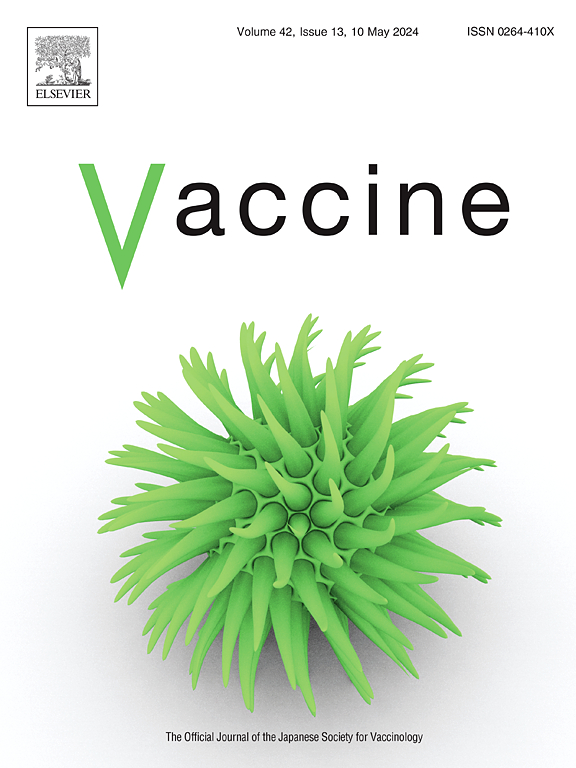Association of baseline cytokines with antibody concentrations after diphtheria-tetanus-acellular pertussis booster vaccination in Finnish children
IF 4.5
3区 医学
Q2 IMMUNOLOGY
引用次数: 0
Abstract
Background
Despite extensive vaccinations, pertussis remains endemic and epidemic in multiple countries. The persistence of cases can be partly attributed to the significant individual variation in vaccine responses. This study evaluated the association of baseline cytokines (before booster vaccination) on antibody concentrations to Tdap-vaccine antigens.
Methods
Healthy Finnish children (7–10y, n = 36), adolescents (11–15y, n = 37), young adults (20–34y, n = 25), and older adults (60–70y, n = 23) received a Tdap3-IPV booster. Serum antibodies against pertussis toxin (PT), filamentous hemagglutinin (FHA), pertactin (Prn), fimbriae 2/3, diphtheria toxoid (DT), and tetanus toxoid (TT), as well as PT neutralizing antibodies were measured before, one month, and one year after the booster. Baseline serum concentrations of IFN-γ, IL-2, IL-5, IL-10, IL-13, IL-17 A and IL-17F were determined.
Results
The proportion of detectable and undetectable baseline cytokines varied between age groups 58.3 % of children had a higher proportion of detectable IL-5, IL-10, IL-13, and IL-17F compared to adolescents (IL-5, 37.8 %; IL-10, 48.6 %; IL-13, 48.6 %; IL-17F, 37.7 %), young adults (IL-5, 36.0 %; IL-10, 28.0 %; IL-13, 36.0 %; IL-17F, 44.0 %), and older adults (IL-5, 26.1 %; IL-10, 21.7 %; IL-13, 39.1 %; IL-17F, 30.4 %). IFN-γ had a lower detectability in children (44.4 %) and young (40.0 %) and older adults (39.1 %) in contrast to adolescents (62.2 %). IL-2 was undetectable in all age groups while the proportion of detectable IL-17 A decreased with age. A mixed model showed that undetectable baseline levels of IFN-γ, IL-2, IL-10, and IL-17 A were associated with higher antibody concentrations in children before and after vaccination, particularly against PT. Positive associations were observed in adolescents for anti-TT concentrations and young adults for anti-FHA IgA concentrations.
Conclusion
These findings indicate a possible role of existing cytokines in pertussis booster antibody concentrations in children and warrant further studies in different populations. However, the results should be interpreted with caution as the number of subjects is limited.
芬兰儿童白喉-破伤风-无细胞百日咳加强疫苗接种后基线细胞因子与抗体浓度的关系
背景:尽管广泛接种疫苗,百日咳仍然是地方性和流行在许多国家。病例的持续存在可部分归因于疫苗反应的显著个体差异。本研究评估了基线细胞因子(加强疫苗接种前)与tdap疫苗抗原抗体浓度的关系。方法:健康的芬兰儿童(7-10岁,n = 36)、青少年(11-15岁,n = 37)、年轻人(20-34岁,n = 25)和老年人(60-70岁,n = 23)接种了Tdap3-IPV增强剂。检测百日咳毒素(PT)、丝状血凝素(FHA)、perpern、菌毛2/3、白喉类毒素(DT)、破伤风类毒素(TT)血清抗体及PT中和抗体。测定血清中IFN-γ、IL-2、IL-5、IL-10、IL-13、il - 17a和IL-17F的基线浓度。结果:可检测和不可检测的基线细胞因子的比例在不同年龄组之间存在差异:58.3%的儿童可检测到IL-5、IL-10、IL-13和IL-17F的比例高于青少年(IL-5, 37.8%;Il-10, 48.6%;Il-13, 48.6%;IL-17F, 37.7%),青壮年(IL-5, 36.0%;Il-10, 28.0%;Il-13, 36.0%;IL-17F, 44.0%),老年人(IL-5, 26.1%;Il-10, 21.7%;Il-13, 39.1%;Il-17f, 30.4%)。IFN-γ在儿童(44.4%)、年轻人(40.0%)和老年人(39.1%)中的检出率低于青少年(62.2%)。IL-2在所有年龄组中均未检测到,而il - 17a的检测比例随着年龄的增长而下降。一个混合模型显示,在接种疫苗前后,儿童的IFN-γ、IL-2、IL-10和IL-17 A的基线水平与较高的抗体浓度相关,尤其是针对PT。在青少年的抗tt浓度和年轻人的抗fha IgA浓度中观察到正相关。结论:这些发现表明存在的细胞因子可能在儿童百日咳增强抗体浓度中起作用,值得在不同人群中进一步研究。然而,由于受试者数量有限,结果应谨慎解释。
本文章由计算机程序翻译,如有差异,请以英文原文为准。
求助全文
约1分钟内获得全文
求助全文
来源期刊

Vaccine
医学-免疫学
CiteScore
8.70
自引率
5.50%
发文量
992
审稿时长
131 days
期刊介绍:
Vaccine is unique in publishing the highest quality science across all disciplines relevant to the field of vaccinology - all original article submissions across basic and clinical research, vaccine manufacturing, history, public policy, behavioral science and ethics, social sciences, safety, and many other related areas are welcomed. The submission categories as given in the Guide for Authors indicate where we receive the most papers. Papers outside these major areas are also welcome and authors are encouraged to contact us with specific questions.
 求助内容:
求助内容: 应助结果提醒方式:
应助结果提醒方式:


